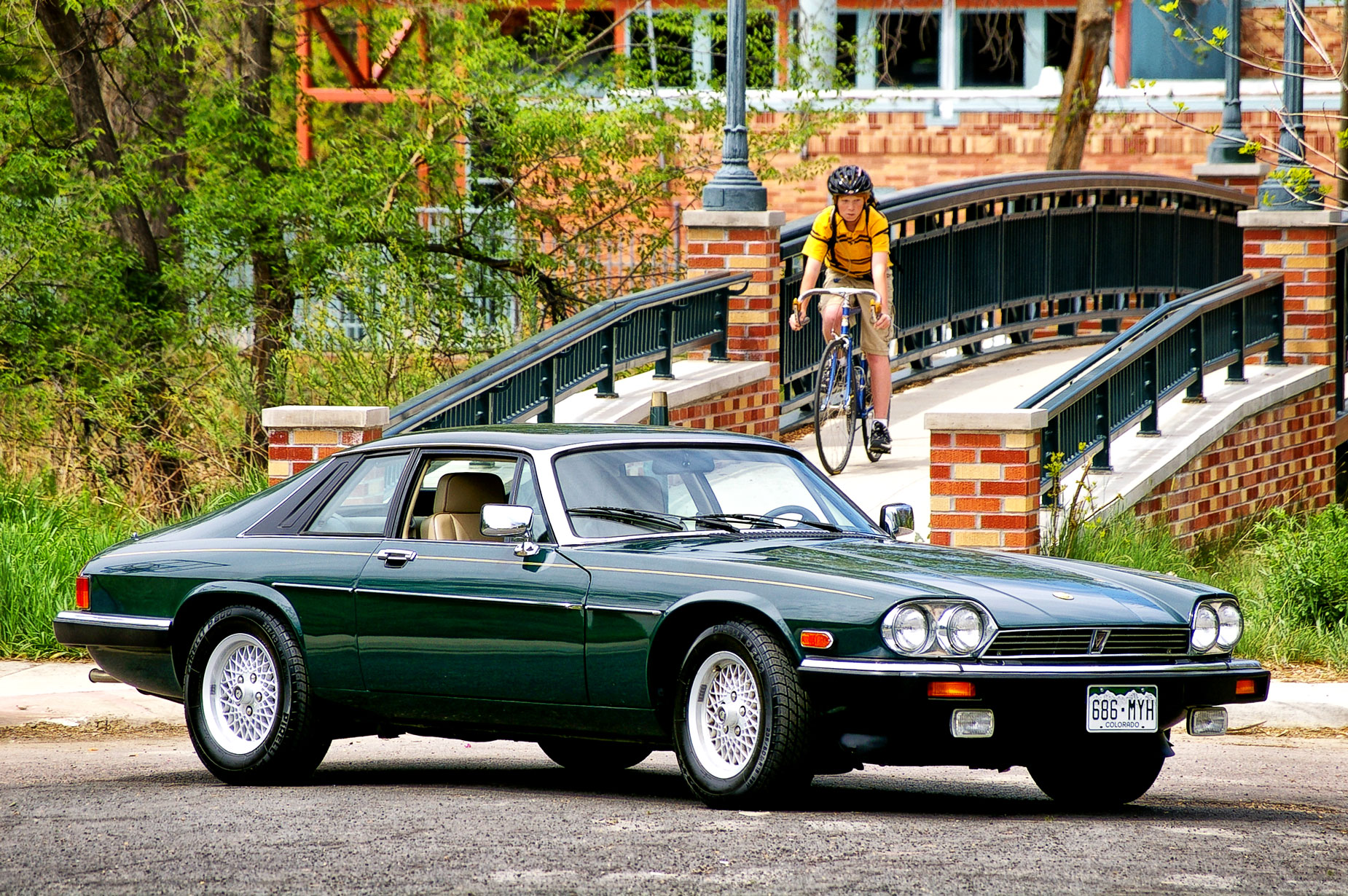The My Classic Car series for #wheelswednesday continues today with a look at my 1992 Jaguar XJS. As someone who has always considered himself to be an Anglophile, this was the second Jaguar automobile I owned. The first was a Series III XJ-6. Look for more information about that car in a future post in this series.
Today’s Post by Joe Farace
The leaping Jaguar on the bonnet, to me, makes it look more like a hunter than something that is getting away. It’s a hunter. Richard III definitely would have had a chauffeur driven Jaguar MK X.—Ben Kingsley
Mary and I initially encountered our 1992 Jaguar XJS in Florida In 2006 when we were visiting her relatives. We negotiated what we thought was a fair price with the owners but that was just the beginning. It cost us $1200 to ship the car to Colorado and we had it delivered to a local Jaguar specialist for a once-over that cost us $2000 but he was kind enough to have the VIN inspected (a Colorado requirement for cars purchased out-of-state) and an emissions test, which it passed. Little did I know that these additional expenses were only the beginning but you probably already knew that; it’s a Jaguar. (If you get a chance, take a look at the Car Wizard’s post about a 1991 XJS, entitled “$20 Gasket turns into a Huge Nightmare.”)

How I made this photograph: I photographed my former 1992 Jaguar XJS in a cul-de-sac of a group of homes that backed up to Mamie D Eisenhower Park. I made a few exposure but when this kid on a bike came riding across the bridge in the background I made a few more with him it it. I liked this exposure the best based on where the bike appeared in the frame. The image was made using a Pentax K100D, while I was writing the Magic Lantern Guide for this camera. The lens used was the affordable ($99) smc Pentax-DA 50-200mm f/4-5.6 ED at 180mm. The Av exposure was 1/350 sec at f/8 and ISO 200.
The Jag!
Jaguar’s XJ-S was re-launched May 1991 and under Ford’s ownership they dropped the model name’s hyphen marketing it as the XJS. The rear side windows in that model look as if they were enlarged despite having the identical glass aperture as the earlier cars and the trademark flying buttresses remained—my favorite design feature—but was minimized by new side window trim. In May 1992, the V12 engine that my car had was enlarged to 6.0 liters. Outboard rear brakes replaced the very Jaguar inboard brakes that were found on previous models. After 21 years in production, the XJS was discontinued in 1996.
I loved the way this car looked. I was British Racing Green with a sumptuous Heritage Tan leather interior and automatic transmission, albeit, not the cooler J-pattern shifter of later models. It was pleasant to cruise in, but not so much to drive hard. Once we took the car on a drive for English cars and in trying to keep up with cars like Austin-Healys on the twisty bits it was exhausting. We entered it in a few car shows, didn’t win anything; Our XJ-6 was more successful in that way. Over time Jaguar fatigue set in and by that time Mary was into racing her Miata and I was drag racing my Golf GTI 337 we traded the car in for Mary’s first Mercedes Benz SLK, the good blue one, not the bad silver one.
Yet, I still miss both of those Jaguars. It seems that to be a Jaguar owner you need to have other cars in your stable to take a break from Jaguar Fatigue Syndrome and when it comes to cars, sometimes a pretty face is just not enough.
 If you enjoyed today’s blog post and would like to buy Joe a cup of Earl Grey tea ($2.50), click here. And if you do, thank so very much.
If you enjoyed today’s blog post and would like to buy Joe a cup of Earl Grey tea ($2.50), click here. And if you do, thank so very much.
Along with photographer Barry Staver, Joe is co-author of Better Available Light Digital Photography that’s available from Amazon for $21.50 with used copies starting at giveaway prices—starting around five bucks